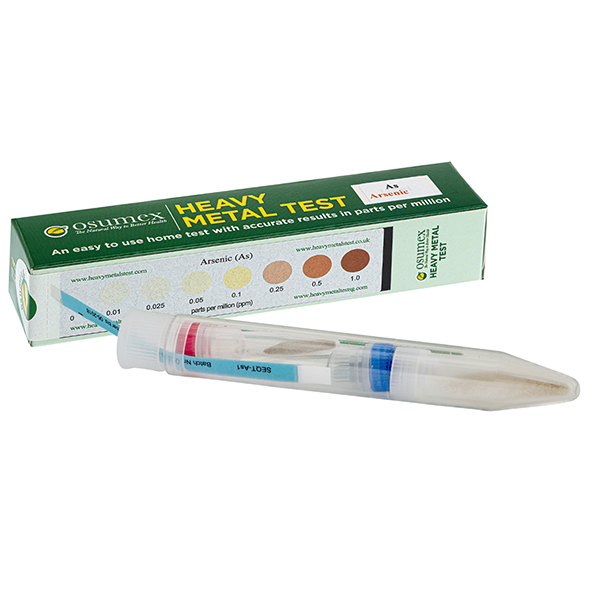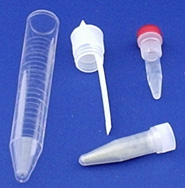
- Test for presence of Arsenic
- This non-invasive Arsenic Testing Kit helps detect harmful activities within the body through urine instead of blood
- Suitable for: urine, water; to test the subtances which
are not in solution, preparation can be made to convert them into
solution for testing, this includes dust, dirt, paint, rice, milk, food,
dishes, glasses
|
|
|

Tests the presence of ions of Arsenic to a high degree of accuracy to detect contamination in water, the body and on a wide range of materials in your environment.
Suitable for: urine, water; to test the subtances
which are not in solution, preparation can be made to convert them into
solution for testing, this includes dust, dirt, paint, rice, milk, food,
dishes, glasses
This non-invasive Arsenic Testing Kit helps detect harmful activities within the body through urine instead of blood.
|
Sources for Arsenic:
- Arsenic is present in small amounts in soil and therefore is
present in our food. It is also in the ocean, which transfers to
seafood, especially the filtering mollusks, such as clams and oysters.
Some arsenic may be present as a contaminant in meats as well.
- Arsenic is also found in many fuel oils and coal, and hence it is
added to the environment when these are burned. Weed killers and some
insecticides (particularly lead-arsenate sprays) are the main sources of
arsenic contamination. This is responsible for a twentyfold increase in
the level of arsenic found in humans.
The UK maximum contaminant level for Arsenic in tap water set by DWI/DEFRA is 10µg/l (= 0.01mg/l).
Effects of Arsenic:
- Toxis effects of arsenic contamination can be poisonous, ingestion
of arsenic can be dangerous and lead to illness and in some cases be
fatal. Possible effects of arsenic toxicity include hair loss,
dermatitis, diarrhoea and other gastrointestinal symptoms, fatigue,
headaches, confusion, muscle pains, red and white blood cell problems,
neurologic symptoms, and liver and kidney damage. Acute arsenic exposure
may cause a rapid series of symptoms. Arsine gas exposure is very toxic
to the lungs and kidneys and is often fatal. Death from low-level,
chronic arsenic exposure has the appearance of death from natural
causes.
The Arsenic Test Kit contains an easy-to-read colourchart:

Sensitivity: 0, 0.01, 0.025, 0.05, 0.1, 0.25, 0.5, 1.0 ppm (mg/l)
Contents: each unit contains one test, including:
- 1 Colour strip on box of kit
- 1 Test Instruction Sheet
- 1 Large Test-tube
- 1 indicator stick (in the large test-tube cap/cover)
 - 1 vial with red cap - reagent 1 (dark solid content) - see note** below
- 1 vial with clear cap - reagent 2 (white powder)
- 1 vial with blue cap - reagent 3
**Note: reagents contain acids. Avoid any contact with skin or eyes.
Rinse immediately and contact your doctor if contact is made or
especially if an eye splash occurs
Storage: The Arsenic Test kit should be stored in a cool place, ideally 12°C to 20°C. |


